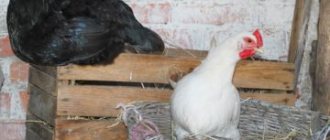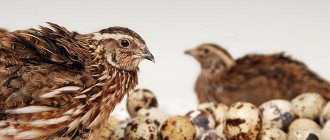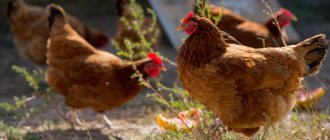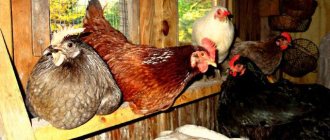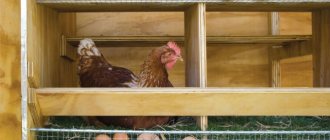According to their physiology, birds are more sensitive to light than humans.
Their visual acuity is higher, but they can navigate well only in the presence of a sufficient amount of light. In the dark, chickens see practically nothing. This feature is widely used in poultry keeping technology - when the lights are turned off, the chickens stop all activity and fall asleep. Lighting for Chicks: Light and its Impact on Performance (read more)
The efficiency of poultry farming directly depends on the correct lighting.
Lighting in the chicken coop
Author: Chicken Ryaba
/ July 13, 2022 at 03:38 pm
Good afternoon, experienced and novice poultry farmers! Today at the debriefing, lighting in the chicken coop is available at all times of the year. The productivity of poultry, including chickens, regardless of the direction of productivity and breed, depends on many factors. Let's take, for example, egg and meat-egg birds.
Their quantitative and qualitative economically useful traits are determined by feeding and housing conditions, age, weight, physiological state and other technological aspects, and individual characteristics of the breeding object. And lighting in the chicken coop is very important!
The duration, sequence (alternation) of light and dark periods is the so-called lighting regime, which affects physiological processes, which include ovulation (the process of formation and laying of eggs). Therefore, today we will talk about the nuances of poultry house lighting.
You will learn what light sources are used in the chicken coop, what should be the duration of the light and dark parts of the day, etc.
Before moving on to the main issue, it will be useful to find out why it is necessary to maintain proper lighting conditions. Due to the peculiarities of the structural and functional organization of the organs of vision, chickens cannot see in the dark and for this reason they immediately fall asleep when they find themselves in it.
Therefore, light is necessary to keep the hens active for 14-16 hours. This is the optimal length of daylight recommended for egg-laying and combined breeds of poultry. A special lighting mode has been developed for broiler chickens.
If the duration and intensity of illumination are poorly chosen, laying hens end up with small-sized eggs with soft or missing shells. In the dark, mothers sometimes injure and even trample their children.
Young animals deprived of light grow more slowly and therefore spend more feed per unit of weight gain. The negative effects of light deficiency also include later puberty, deterioration of the body's immune status and calcium metabolism.
It must be understood that poultry, like other farm animals, require rest to maximize their genetic potential, since excessively intensive use of laying hens leads to their premature wear.
How to prepare a chicken coop for winter cold?
The first stage of the insulation process is the selection of a suitable material. The most common are: penoplex; Styrofoam; mineral wool; foil penofol.
The latter option is more budget-friendly, but they all have one function - they retain heat indoors. Which material to choose is a purely individual decision, since their main difference is only in the structure.
The insulation process itself takes place in several stages:
Floor insulation. The bedding layer on the floor can be made of various organic materials. Straw, hay, peat, moss, sawdust and shavings are used for these purposes: they are best suited for floor insulation, are safe, affordable, and after use can be used as fertilizer on the floor. plot. The layer thickness should be at least 20 cm. As the material cakes, it is necessary to add 5-10 cm of filler. A complete replacement of the insulation is carried out at the end of the season.
Insulation of walls. The outside walls are insulated with foam blocks, and on top with plastic sheets or slate. If the climate for keeping birds is harsh, then the inside of the room can be lined with foam blocks.
Insulation of the roof and ceiling. As for the roof, there are no special requirements
It is important that there are no cracks or breaks in it. If there is an attic above the poultry house, it is recommended to lay it with a thick layer of straw.
Insulation of doors and windows
Doors and windows should not allow air to pass through or create drafts. To do this, it is enough to cover them with old thick blankets or blankets (several layers if necessary).
Additional lighting
Reducing daylight hours directly affects the egg production of chickens. If additional lighting is not provided in the poultry house during the cold season, the productivity of the birds will be minimal or even zero.
When organizing additional lighting, you must adhere to some important rules:
To increase daylight hours inside the chicken coop, you can use LED, fluorescent or ordinary household incandescent lamps. With excess lighting, birds become restless and fight more, so it is important not to overdo it in organizing winter lighting. For 10 square meters of room, one 60 W light bulb will be enough. It is best to install the light bulb under the ceiling in the area with feeders - this will create the most comfortable conditions for the chickens. It is necessary to turn on the lighting in the morning (at 5–6 o’clock) and turn it off with the onset of full daylight.
In the evening, as soon as it begins to get dark, you can turn on the lamp again and leave it working until 8–9 pm. This process can be greatly simplified by purchasing a timer at a hardware store, which will automatically turn the lighting on and off according to a given schedule.
Balanced nutrition for laying hens in winter
Proper nutrition in the required quantity greatly influences the productive performance of the bird.
Therefore, in winter it is important to plan the diet of chickens based on a number of rules:
- In the summer, it is necessary to dry various herbs (nettle, clover, chicken millet), tie the preparations into small bunches and hang them not high above the floor.
- Add boiled root vegetables (beets, zucchini, carrots, potatoes, pumpkin) to the chickens' diet.
- Prepare special mash, which includes crushed eggshells, bone or fish meal, bran, sunflower cake. This supplement will provide the birds with all the missing substances.
- Bloodworms or worms can be added to the diet as a source of additional protein and calcium in the diet.
- In separate containers in the poultry house there should be chalk, small gravel, and crushed shells.
- Water for drinking in winter must be heated to the optimal room temperature.
By creating all the necessary conditions in the poultry house, as well as adjusting the poultry’s diet, you can achieve good productivity indicators and get high-quality eggs even in winter.
The main thing is to follow simple and few rules, and then the birds will be healthy and happy.
Artificial lighting in the chicken coop
Types of artificial light sources. Priority is given to lamps with a small amount of energy consumption, easy to maintain and adjustable artificial light sources. A good lamp is one that does not fail due to high humidity and dust in the room. Of course, there is a limit to everything.
Advice: do not lay wiring inside the chicken coop, as during transition periods and rainy seasons it is damp, which can lead to fire and electrical shock to the owner and his feathered charges.
Lighting the chicken coop with an incandescent lamp
Light sources in the form of incandescent lamps. This type of lamp was the most popular a couple of decades ago. Nowadays, these light sources are the most “voracious,” which is especially noticeable when keeping a large flock of chickens. At the same time, incandescent lamps still pay off in small poultry houses.
The main advantages of incandescent lamps:
Poultry houses are usually equipped with 40-60 watt lamps.
LED lighting in the chicken coop
The lion's share of such light sources stand out due to their long service life - from 50 thousand hours of operation. Many people do not know that manufacturers of LED lighting devices today produce products that were originally developed purely for the needs of poultry farming.
The main disadvantage is the low cost. This minus is justified by the quick payback of lighting fixtures.
Fluorescent lamps
This type of lighting is considered an excellent solution for poultry houses. Experts recommend equipping chicken coops with 40-50-watt fluorescent lamps.
Advantages of fluorescent light sources:
As for the disadvantages of fluorescent lamps, due to the structural and functional characteristics of the visual organs, chickens perceive operating lighting fixtures as flashing sources. This problem is solved by using lamps with dimmers. But light controls in a chicken coop often break down. Fluorescent lamps are subject to mandatory recycling.
Energy saving lamps for the chicken coop
This type of lamp is also in great demand among bird breeders. Energy-saving devices are good because they are not “gluttonous”; after adjustment, they illuminate the room with warm white light.
Disadvantages include high cost, somewhat complex brightness adjustment, and mandatory disposal of used lamps. The service life is actually less than the time guaranteed by manufacturers.
Light source color
Poultry breeders have long noticed that with the help of lamps of certain colors it is possible to change the productive qualities of birds in the desired direction.
Let us immediately note that these associations have not yet received scientific confirmation.
Scientists have not yet given an exact answer whether this is so, but, according to reviews from experienced farmers, color can really have a positive effect on the standard of living of the herd.
Light distribution in the poultry house, light regime
According to the rules, the light in the room with the bird is distributed unevenly. The feeding area is illuminated brighter - up to 70 lux, in the rest area with perches - up to 5 lux, in a group with young animals - no more than 40 lux. For adult laying hens, 10 lux is sufficient, while roosters are more comfortable at 15 lux. Advice: if your charges are constantly acting aggressively and fussing, reduce the intensity of the light.
The lighting fixtures in the poultry house are turned on a couple of hours before dawn. It would be great if the lighting system has a timer that regulates the brightness of the light. In the absence of automation, the light is first turned on in the place furthest from the sockets. Then, after two or three minutes, the time for general light comes. In the evening, the lights are turned off in the reverse order.
Tip: since artificial light sources become covered with dust over time, take care of the brightness reserve.
Which lamps are best to use?
For the chicken coop lighting system, you can choose traditional incandescent lamps or more modern devices: infrared, LED, fluorescent. Each of them has its pros and cons, so first of all you need to proceed from the area of the barn and the temperature in winter.
Pay attention to several factors at once:
- electricity consumption;
- compliance of the radiation range with the vision of chickens;
- ability to adjust brightness;
- durability and reliability (resistance to dust and moisture);
- price.
Incandescent lamps
In some cases, chicken coops are illuminated using incandescent lamps. They are cheaper than all other lighting devices and shine quite brightly. In this case, the radiation range corresponds to the visual characteristics of chickens. Incandescent lamps provide not only light, but also heat, which is especially important for regions with cold winters.
But they have 2 significant drawbacks:
- quickly fail;
- consume too much energy.
If the chicken coop is small, you can use such lamps.
Infrared lamps
Lighting a chicken coop in winter is often combined with heating. For this purpose, well-proven infrared lamps are used. They last a relatively long time and illuminate in the red range. At the same time, they consume quite a lot of energy: 1–2 kW/h and get very hot. In winter, this is a definite plus, but in the warm season it is undesirable to use such devices for lighting.
Infrared lamps provide not only illumination, but also heating
Fluorescent Lamp
Fluorescent lamps have recently begun to be used less frequently in lighting chicken coops and other premises. The main reason is constant flickering. It is invisible to the human eye, but it is dangerous for the vision of chickens. In addition, the radiation range does not correspond to the vision of birds.
There are other disadvantages - to regulate the light level you need to purchase a dimmer, which often fails. Used lamps cannot be thrown away with other household waste - they must be taken to special points.
Although such illuminators also have their advantages:
- affordable price;
- long service life;
- simple installation;
- low electrical energy consumption.
Energy-saving lamps
Very popular lamps for lighting a chicken coop. They have a number of advantages:
- serve for a very long time;
- minimal energy consumption;
- give uniform light;
- there is no need to install protective shades.
The main disadvantage of energy-saving lamps is their high cost. In addition, the lighting level cannot be adjusted. Used appliances cannot be thrown away with regular waste - they must be taken to a special point.
LED bulbs
LEDs have become increasingly used to illuminate chicken coops for a number of reasons:
- durability;
- the radiation range corresponds to the vision of chickens;
- you can easily adjust the intensity;
- do not overheat (can be used in summer);
- minimal power consumption.
These devices have no disadvantages, except for one – high cost. But they serve for a very long time, so they will definitely justify themselves in economic terms.
The nuances of lighting a poultry house with broilers and poultry of the egg production direction
Chickens of egg-laying, universal breeds (in other words, laying hens) and broilers are more productive under different light conditions. For 1-7 week old broilers and 1-2 week old egg young animals, a 23-hour daylight period at a light brightness of 45 Lux is recommended.
Broiler coop lighting
In farms specializing in meat poultry, incubation regimes may differ slightly. As a rule, this is due to the different breeds of birds. In any case, incubation regimes are aimed at increasing the average daily gain in live weight and strengthening bone tissue.
insects similar to cockroaches in the apartment photo
In broiler poultry farming, such a pathology as falling on one's feet is common. This is a result of the bones not being able to support much weight.
Dark periods of time begin to be used in the lighting mode when the chicks weigh 100-150 grams. Birds usually gain this mass by 7 days of age. The first dark period negatively affects the appetite of the young. Chicks begin to eat normally on the second or third day of the postembryonic period.
According to experienced bird breeders, one dark period (block of darkness) should be used daily.
In a chicken coop with intensively growing birds (periods of intensive growth alternate with slow growth. These are the laws of periodicity and unevenness), the duration of dark periods does not change. 21-day-old young animals are provided with longer daylight hours.
Before being sent to slaughter, a 23-hour daylight period is maintained. Before catching birds (two or three times before), the brightness fluctuates between 10-20 Lux.
On hot summer days when fattening broilers, the daylight hours are shorter than on days with normal outside temperatures. In winter, light sources are turned on at night. Thanks to this regime, chickens move more actively and eat better in cold weather.
Lighting for laying hens
The duration of daylight, which is comfortable for egg-laying chickens, is indicated above - for 14-16 hours. As for the brightness of the light, it is 10-20 Lux, which is equivalent to six watts per square meter of the poultry house.
During puberty in pullets, the length of daylight hours does not increase, as this inhibits the development of the reproductive system.
For information about lighting in a chicken coop in winter for laying hens, see these tips.
What kind of lighting do you use in your chicken coop? Share your experience in the comments, any advice is important.
Subscribe to site updates and our channel “Chicken” in Yandex.
See you later, colleagues! In the meantime, we will prepare new and interesting information for you!
Did you like our tips? Share with friends on social media. networks!
Source
Daylight hours for laying hens
One of the factors that determines egg production is the light regime in the chicken coop. As the practice of successful poultry farmers shows, chickens are more productive with 14-16 hours of daylight.
It is important that egg hens are accustomed to constant lighting by 4-4.5 months of age. At this time, their first egg laying begins.
A universal bird raised for eggs and meat carcasses, it is less precocious. Her sexual maturity, determined by the first egg laid, occurs at 6-6.5 months of age.
Changes in daylight hours affect the quantitative and qualitative indicators of egg production, including egg production, egg weight, shell size and thickness.
The light regime in the chicken coop in winter is associated with the growth energy and development of the young. Poor lighting contributes to the development of certain diseases and worsens metabolism.
Let's consider the features of daylight hours for laying hens.
To increase egg production
In order to correctly create a lighting program for laying hens, when changing the light regime, they are guided by the average live weight of the herd. When it reaches 1200-1300 g, the illumination is increased.
If stimulation begins earlier, then sexual maturity occurs faster, but the eggs laid will be small. In the future, the productivity of the livestock will decrease.
This will manifest itself during the post-peak egg production period. The amount of production will decrease sharply, up to the complete cessation of masonry.
The following rules are observed:
- For the first time, sixty minutes are added to the daylight hours.
- Subsequent increases are made gradually, adding half an hour weekly, until the duration is 16 hours.
- The stimulation process lasts for 30 weeks.
- The light intensity is increased gradually, adding 20 lux per day.
How important is lighting for chickens?
In chickens, the visual apparatus is structured differently than in humans. Accordingly, they perceive light differently.
So, if a person in light twilight can easily recognize various objects, then for a bird this level of illumination is practically no different from complete darkness.
This is the first reason why chickens need lighting. Without it, the hen will not be able to navigate, find food or a nest.
But this is far from the only explanation for why birds need good lighting. It is believed that daylight hours for chickens should last from 12 to 14 hours a day.
This value is most favorable for the chicken body.
If it drops to the 10 o’clock mark and below, then this is fraught with the following consequences:
It is worth noting that excessively long daylight hours also negatively affect chickens. During the period of complete darkness, during sleep, the bird’s body better absorbs the nutrients and minerals received from food during the day.
In addition, it is in complete darkness that the bone tissue of the skeleton is best formed in young animals.
Therefore, the 24-hour lighting practiced by some poultry farmers is also erroneous.
Proper lighting in the chicken coop
The normal light intensity in the chicken coop should be 6 W/m2, and it should be distributed evenly over the entire area of the room.
It is recommended to place lamps at a height of 1.8 - 2.2 m from the floor. During the off-season, it is worth turning on the lighting earlier and turning it off later, providing up to 14 hours of continuous lighting.
And on very bright and sunny days it is even necessary to shade the chicken coop, since an excess of light not only reduces the productivity of laying hens, but there are also cases of egg pecking, cannibalism in birds, aggression and increased trauma.
The lighting in the room where mature birds live should be from 10 to 15 lux, in the parent stock - at least 15 lux, with this light the roosters show healthy activity.
Lighting above 20 lux is dangerous as it provokes aggressive behavior.
Turning on and off the light should be without sudden changes, so the animals are synchronized with the regime, and their metabolic processes are established within the framework of this format of changing artificial day and night.
What lighting to choose for a poultry house
The question of what kind of lighting should be in the chicken coop is one of the most important. The light in the chicken coop must be correctly selected: the required lamp power, suitable color and flicker frequency. Making the right choice among the huge assortment on the market is not at all difficult; it is only important to follow a few simple steps-recommendations when selecting lighting for a poultry house:
- Remember a simple calculation: for 6 sq. m need 60 watts. Lamps in the required quantity are selected depending on the area of the chicken coop.
- It is better to choose fluorescent lamps with a power of 40 watts.
- Fluorescent lamps can be replaced by fluorescent lamps with a flickering effect, but to avoid adverse effects on the visual system of hens and chicks, the recommended flicker frequency is 26 kHz.
- You can opt for sodium lamps, they are standardly produced with a power of 50 watts and are ideal for lighting dark corners.
- When choosing lighting for a home chicken coop, you should pay attention to the color of the lamps:
- blue color calms and prevents any aggressive actions in chickens;
- green color in the room of laying hens has a beneficial effect on their physical development;
- It is better to avoid red lighting in the chicken coop, because it reduces egg production in chickens;
- orange, unlike the previous color, on the contrary, increases the reproductive abilities of laying hens and increases the number of eggs.
A few more recommendations:
- Due to the fact that the chicken coop must be wet, it is better to equip the room, all electrical wiring, sockets and electrical panels outside the poultry house.
- It is recommended to use thick shades and protective nets on lamps in poultry houses. This will help avoid lamps breaking and injury to laying hens and chicks from fragments.
- When installing lighting, you need to take into account the time of year and the daily biological rhythms of birds. This will be discussed in more detail below.
- Brightness is also important. Newborn chicks require bright lighting, up to 30 lux, but older chickens (after 21 days) require minimal lighting, only about 5 lux. When a rooster is in the chicken coop, the brightness should be set to 15 lux.
You can turn off the lights in the chicken coop at night only after all the chickens are in their roosts, otherwise they will be disoriented and will not be able to find their place until dawn.
On a note! It is better to choose lamps that provide a smooth attenuation; the lighting of the chicken coop should be as natural as possible. A smooth transition from light to darkness will not cause aggression or panic in the birds, but an abrupt switching off, on the contrary, can lead to crowding and crowding in the poultry house.
Daylight hours for laying hens
As already noted, the optimal length of daylight for adult birds is 12–14 hours a day. The period of complete darkness should be at least 10 hours so that the bird’s body has time to rest.
It is worth noting that the indicated values do not depend on the time of year. In the summer , if you let the bird out for a walk at 6 a.m. and bring it in at 8 p.m., then natural light will be sufficient.
In winter , ordinary daylight is no longer enough.
In this case, it is necessary to use artificial light in the chicken coop at the specified time so that the length of daylight hours remains unchanged. Turn on the lamps according to a clearly planned schedule at the same time every day.
In addition to the duration of the lighting period, another important point is the intensity of illumination provided by the light bulb in the chicken coop. This factor also needs to be taken into account.
When lighting boxes containing newborn chicks, the intensity of the incoming light should be within 30–40 lux (lux).
After 3–4 days, the brightness is reduced by 5 lux. This level is maintained until the start of egg production in chickens.
After puberty, for adult birds, lamps with an intensity of 10–15 lux are installed in the room.
When this value increases, laying hens may behave restlessly and harm each other.
Summer light
The need for artificial lighting also appears in the summer, when it is hot. This is relevant for regions with hot climates. If the room temperature exceeds 27 degrees, then it has a negative effect on chickens:
- Feed pecking rate decreases;
- Egg production decreases;
- The shell becomes thinner.
To reduce the negative effects of heat, electricity is turned on at night. At night the air temperature drops, the birds happily consume food. Electrical appliances are turned on for 3-4 hours.
During the day, the room is darkened for the same amount of time. As a result, the temperature in the poultry house decreases by 5 degrees, which improves the condition of the livestock.
Lighting modes to increase egg production
Good lighting has a beneficial effect on the chicken's body and its productivity. But a significant increase in egg production in birds can be observed only if a certain light regime is observed.
Moreover, it is presented in several versions, each of which has its own characteristics and advantages.
hood with recuperator for a private home
Intermittent lighting for laying hens
The intermittent coop lighting mode involves periodically turning on and off the lights in the coop, which is carried out in accordance with a clear schedule.
At the same time, the total duration of daylight hours of 14 hours does not decrease.
When using this method in birds, the following positive changes can be observed:
Reference. Also, intermittent lighting, as opposed to constant lighting, involves lower feed costs and significant energy savings.
Intermittent lighting is a rather broad concept that only explains in general terms the principle of operation of the method. In practice, one of its subtypes is used: asymmetric or symmetric.
Asymmetrical lighting
This way of implementing lighting involves dividing the overall day into periods of light and darkness in an asymmetrical way. That is, each segment has a different duration.
For example, the following mode is often used:
In this scheme, only a 10-hour period without light is perceived by birds as night. The rest of the time for laying hens is subjective daylight hours.
This approach assumes the following positive changes in the livestock:
In addition, when using an asymmetrical lighting regime, approximately 40-50% of the bird's feed is given during the dark period.
This promotes better complete absorption of nutrients and calcium by the body, which goes into the formation of strong and large eggs.
Also, in the dark, chickens scatter less food and behave more calmly while eating.
Reference. Today, in egg farming, the asymmetrical approach is the most common.
Symmetrical lighting
Symmetrical lighting involves dividing the day into several equal periods of light and darkness.
For example, a chicken's day may consist of four 6-hour periods, with 3 hours of light and another 3 hours of darkness. In this case, in the perception of chickens there is no clear distinction between day and night.
This method is often used in factories that breed chickens for meat, since with such lighting the birds gain weight much faster.
But in the egg direction, symmetrical lighting is also used.
It leads to a decrease in egg production and desynchronization of the laying hen population, while the quality of eggs (shape, size, shell density) significantly increases.
Choosing a bactericidal lamp
A germicidal lamp is a rather serious medical device. To make a wise choice, you must have at least basic knowledge about the effects of infrared and ultraviolet rays on human health. Under natural conditions, the source of beneficial radiation for all living things is the sun. The desire of people to spend a vacation by the sea, bathing in the rays of the southern sun, is completely justified and is especially important for residents of the northern territories of the planet.
Under the influence of ultraviolet radiation, vitamin D is formed, which is necessary for the body to absorb calcium obtained from food. In addition: protein and carbohydrate metabolism improves, hematopoiesis and blood supply to tissues improves, skin vessels dilate, and blood pressure decreases. Ultraviolet radiation also has an analgesic effect, increases the body’s resistance to infections and viruses, helps cope with “winter depression” and has many other positive factors for our health. Considering all of the above, using a bactericidal lamp at home makes sense, but its use requires strict adherence to the instructions.
Since we are talking about health, before making a purchase, do not forget to consult a doctor and, in order to avoid counterfeits, use the services of only specialized medical equipment stores.
Germicidal ultraviolet lamps for the home are fluorescent and quartz. They differ in radiation spectrum, power, size and have different specializations. The choice of one model or another depends on the purpose for which you decide to buy a bactericidal lamp.
Types of lamps used
When creating an artificial lighting system in a chicken coop, the type of lamp the breeder chooses plays a big role. There are many variations of such products on the market.
But most often in poultry houses fluorescent, diode or incandescent lamps are used. Each type has its own advantages and disadvantages.
Incandescent lamps
This option is most common in chicken coops. Incandescent lamps have a minimal cost, are sold at any hardware store, and are easy to install and dismantle if necessary.
In addition, such a product does not require special disposal conditions, since it does not contain substances harmful to health.
One of the disadvantages of incandescent lamps is the fragility of the product.
Luminescent
Fluorescent lamps are also often used in domestic and industrial poultry houses.
Such light bulbs are popular due to the following advantages:
The disadvantages of the device include:
In addition, it is worth noting that when illuminated, such lamps flicker slightly, which can cause some discomfort in chickens.
LED
LED lamps are gradually replacing all other types of lamps from the market.
The reason for this is the following advantages of the product:
As for the disadvantages of such products, they note only the high cost of the light bulb. But it pays for its cost in the shortest possible time due to serious energy savings.
How to switch to intermittent lighting?
Breeders transfer both young and adult livestock to intermittent lighting. If young chickens grew up under constant lighting, then they are transferred to intermittent lighting gradually from the age of 4–5 months.
During this period, laying hens are most sensitive to light stimulation.
When raising young animals using a symmetrical or asymmetrical regime, after the laying hens reach puberty, the program is not changed.
As for choosing the appropriate regime to which the bird is gradually transferred, it is strictly individual.
The schedule for alternating periods of darkness and light is drawn up based on the breed of bird, the climatic conditions of the region, the feed used, the age and purpose of the chickens.
But regardless of the chosen mode, there are a number of points that must be observed when translating:
Various studies have shown that the best productivity is achieved by those hens that have been raised under intermittent light throughout their lives.
Lower rates are observed in birds raised under constant lighting and then transferred to an asymmetrical mode.
The transfer of young animals from intermittent to constant lighting, according to breeders, is not at all advisable.
Feeding day-old young animals
The diet of small chickens up to 2-4 months is designed so that the growing body receives important nutritional elements. In addition to a clear distribution of the balance of carbohydrates, proteins, vitamins and minerals, it is necessary to strictly adhere to the feeding schedule. Day-old chicks are given crumbly porridge (mash) from hard-boiled, well-crushed yolk, millet cereal, finely crushed wheat grains, cleared of the top layer, diluted with a small amount of hot water. This feed is distributed to newly hatched livestock immediately after preparation (no later than 30 minutes).
The shells of grain crops: barley, oats, wheat contain a lot of fiber, which is difficult for early laying hens to digest. They must be cleaned during preparation.
In addition to the mash mixture, newborn laying hens will benefit from a finely ground egg sprinkled with corn or semolina (sprinkling is recommended so that pieces of yolks and whites do not stick to the fluff or paws of the chicks), and mixtures of ground grains:
- barley;
- corn;
- oats;
- peas
For mash, only medium-ground grain is suitable for day-old chicks. Too small particles of food enter their nostrils, causing irritation of the mucous membrane.
For chickens, you can also use ready-made feed, called “zero” or “starter”. They consist of crushed grains, amino acids, vegetable fats and a small amount of fishmeal.
Recipe for complete feed for young chickens of egg-cross breeds
| Ingredients | Age of young animals (days) | ||
| 1-30 | 31-90 | 91-150 | |
| Dry return | 1 | — | — |
| Fish flour | 3,9 | 4 | — |
| Corn | 17,4 | 10 | 10 |
| Wheat | 35 | 41 | 18 |
| Barley | 16 | 18 | 34 |
| Hydrolytic yeast | 4,5 | 4 | 2,9 |
| Meat and bone meal | 2,5 | 3 | 3 |
| Sunflower meal | 15 | 5,3 | 1 |
| Herbal meal | 3,5 | 5 | 8 |
| Ground shell | 1,2 | 1,5 | 1,3 |
| Table salt | — | 0,2 | 0,3 |
| Wheat bran | — | 8 | 10 |
| Bone flour | — | — | 1,5 |
| Millet | — | — | 10 |
What does light affect?
During the growing process, the farmer operates with two lighting factors.
Intensity
It is measured in lux (Lx) and determines the brightness of light. To measure it, a special device is used - a lux meter.
If you have some skill, you can determine the lighting intensity approximately, “by eye.” Almost complete darkness is 0.5-1 Lux, light twilight is about 5 Lux, bright artificial light in the room is about 50-70 Lux.
By changing the intensity of lighting in the poultry house, you can achieve the following goals:
In large poultry farms with floor housing, the cost of organizing lighting amounts to up to 20% of the construction budget.
Length of daylight
The second important factor is light in a poultry house. Using the time of turning the light on and off, the following processes are regulated:
Based on these two indicators, a lighting program is drawn up. It can be continuous - with one block of darkness or intermittent (with two, three or even four blocks of darkness). In farming conditions, it is better to use continuous programs. They will be different for broilers, replacement chickens and laying hens.
Therefore, 24-hour lighting is contraindicated for broilers and layers!
As for the color vision of chickens, low perception in the violet part of the spectrum is of practical importance. Chickens perceive blue light as darkness, so when catching and regrouping the flock, they use blue lamps.
pros
Sometimes difficulties arise in the process of installing lighting in a poultry house. But with minimal material costs and the loss of a small amount of time, they get tangible advantages:
- Year-round increase in egg production.
- Increased shell density, increased egg volume.
- Improved taste: the white acquires an elastic consistency, the yolk is bright in color.
- Rapid weight gain of chickens, due to the acceleration of puberty of the young, and therefore egg laying begins earlier.
- The number of injuries to chickens is minimized, since in the dark they trample each other.
- Rational use of feed due to improved digestibility.
- Reducing molting time, normalizing calcium metabolism, strengthening the immune system.
- Birds find food more easily.
- The ability to carry out high-quality manipulations: vaccination, wing correction, catching.
Recommendations for system design
A bright poultry house is convenient for both chickens and staff. When arranging lighting systems, different intensities are provided in different areas of the chicken coop. Thus, chickens prefer to feed when the illumination on the feeder is 60 lux, and for egg-laying and resting on the roost they will need twilight of 0.5-1 lux.
rejuvenated flower care at the dacha planting
The lamp installation example shown in this photo is suitable for a small chicken coop.
Depending on the size of the room, several lighting lines are installed. When kept in cages, they are placed above the passages between the batteries. The height of the lines should be such that workers do not touch them with their heads, but can easily reach them with their hands for changing lamps and other maintenance (about 1.8 - 2 m). It is recommended to purchase and use shades for lamps to protect them from dust and moisture. If necessary, the lampshades can be painted blue or red (reduces pecking in chickens).
It is advisable to automate turning the lights on and off by installing simple electromechanical relays. In small farms, the brightness can be reduced by replacing the bulbs with weaker ones or unscrewing them one at a time (although the uniformity of lighting will suffer).
The simplest automation of lighting in a chicken coop using a time relay (photo from the farm of the author of webferma.com).
In large farms, it is recommended to install a light control system that includes a “sunrise-sunset” function. It allows you to adjust the light intensity throughout the entire growing cycle without fiddling with light bulbs. In addition, with such a block, the light in the poultry house does not turn on abruptly, but smoothly, simulating the natural course of events. With this switching on and off, the chickens are not stressed.
Let's talk separately about which lamps are best used in the lighting system.
Other IR heater options
In addition to lamps, other types of IR heaters can be installed in chicken coops.
All of them can be divided into three main groups:
Infrared lamps of two main types will help you obtain both light and heat at the same time: mirror lamps marked IKZ (essentially, those lighting elements that resemble ordinary incandescent lamps) and infrared mirror red lamps, on which you can find the designation IKZK (in this case, the bulb is made of red dark glass, due to which most of the energy is transformed into heat rather than light).
It is the latter that are more relevant in livestock farming and can successfully perform their functions in poultry houses. If we are talking about linear infrared light sources, then among them there are three main types:
agronomu.com
Advantages and disadvantages of different types of lamps
Ideally, poultry house lights should consume little energy, be resistant to dust and moisture, require little maintenance and be dimmable. Several types of lamps are used in poultry farming.
Incandescent lamps
“Ilyich bulbs” are no longer relevant on large poultry farms due to high energy costs. However, in a small chicken coop they are quite appropriate. Their advantages are as follows:
Fluorescent Lamp
Classic fluorescent lamps for raising chickens are also becoming a thing of the past.
It is quite widespread. This type of lamps produces uniform white light, they are relatively inexpensive and consume little electricity. They are durable, easy to install, and the cost of maintaining such a system is low. The disadvantages include:
Energy saving lamp
The advantages of such lamps
The disadvantages include the following:
There are special colored poultry lamps on the market from . They are called “Orion” and work on the principle of conventional “energy saving” devices. True, the cost of such light bulbs is several times higher.
If you believe the manufacturer's recommendations, the combination of different colors (blue, white, red and green) in the poultry house increases the productivity of broilers and layers. Let us note that science on this issue does not yet provide clear answers.
Energy-saving lamps do not require complex automation and lampshades.
LED bulbs
Today this is the most progressive type of lighting in poultry farms. LEDs have many advantages:
Such systems are quite expensive, but even compared to energy-saving light bulbs, LEDs pay for themselves many times faster.
The photo shows various designs of single LED lamps.
Pros and cons of heating with an infrared lamp
Like any other type of heating, infrared lamps have advantages and disadvantages. They must be studied when choosing in order to understand the features and make a reasonable decision.
If the chicken coop has wiring for incandescent lighting, you can also connect a red lamp to it.
Advantages
The advantages of lamps for a chicken coop are much greater than the disadvantages. That is why they are used so often in different regions, including those where frosts in winter reach -40 degrees. The main advantages are:
This is the most environmentally friendly way to heat a poultry house. The lamps do not burn oxygen in the room and do not emit harmful substances, which allows you to create an ideal microclimate for laying hens. Essentially, infrared heating provides the conditions in which chickens feel best, so even winter is no obstacle to collecting the same number of eggs every day as in summer. The system works in different conditions with the same efficiency. There is no need to provide optimal humidity. Even if the air in the chicken coop is too humid, the lamp can be turned on without restrictions
Over time, it will ensure a decrease in humidity due to air heating and its optimal content, which is also important. Infrared radiation has a positive effect on the bird's immunity, increasing resistance to diseases. In addition, chickens normalize metabolic processes and improve the functioning of the gastrointestinal tract
The heat from the lamp is as close as possible to natural sunlight, which is why it is beneficial for laying hens. The efficiency is one of the highest. The lamp does not heat the air by radiating heat, but heats all surfaces under it, the efficiency is an order of magnitude higher. It is precisely the space that is nearby that is heated; the heat, according to physical laws, rises and warms the chickens on the roost. This option is best suited for poultry houses.
Infrared lamps emit both short, medium and long waves. Therefore, surfaces located at different distances from the radiation source are heated. This ensures high efficiency in rooms of different sizes and designs. This type of heating is much easier to install than any other. It is necessary to install the wiring and secure the lamps in suitable places. If you arrange water heating, you will have to lay pipes, and making a stove is also much more difficult and expensive. The costs are low, which is also important, and the system can be assembled in a day. When the equipment operates, no convection currents are created, so dust does not circulate throughout the chicken coop and the microclimate is not disturbed. It also does not burn, so there are no foreign odors, and the air does not dry out. Lamps and heaters operate silently, this is also important, since the bird may react poorly to constant hum.
The lamp not only heats the chicken coop, but also serves as lighting, which is quite enough for the birds.
Flaws
This solution also has disadvantages that need to be taken into account when choosing a heating method for the poultry house. There are not as many advantages as there are:
- High price of lamps. They do not have a very long resource, so they need to be changed periodically. But if you compare it with the price of water or stove heating, the money saved will last for decades.
- The surface heats up to a high temperature. Therefore, the heat source must be installed in such a way as to prevent human or bird contact with the heater. You can do otherwise and install a protective wire frame to prevent accidental contact and protect the chicken coop from fire.
To avoid burns from a hot surface, it is better to buy a lamp with a metal frame.
Practical recommendations
Light programs for broilers and egg poultry will differ in both daylength and intensity. When introducing day-old chicks into the poultry house, all types of chickens need bright light and long daylight hours. This way the chickens are better able to find food and water and get used to each other and to the environment in the room.
The first 5-7 days for broilers and 7-14 days for replacement young animals provide only one hour of darkness and maintain a brightness of 40-50 Lux. Next, programs are applied depending on the goals pursued.
As for an adult laying hen, the daylight hours for it should last 13-14 hours a day with a lighting intensity of 10-20 lux, which equals approximately 6 W per square meter of floor.
When keeping laying hens in cages, the light regime comes to one of the first places, along with the choice of cross and feeding.
How to develop your own program
If you are serious about raising broilers, then regarding maintenance you need to follow the recommendations of the manufacturer of each specific cross. Supplier companies post this information on official websites and distribute it in the form of a content guide.
To organize lighting in the chicken coop with your own hands, we recommend using the recommendations of our website webferma.com.
The goal of any program is to organize feed intake in such a way as to stretch the chick's crop and give it the opportunity to first develop bones and then build muscle mass.
When keeping 500 chickens or more, the cost of lighting using LED lamps pays off within several growing cycles.
Examples of lighting programs for broilers
It is irrational to be attached to age, because... There are many crosses of varying productivity. Therefore, they start from the calculated weight.
Weight less than 800 g. at 21 days of age
| Age (days) | hours of darkness |
| 1 | 1 |
| 100-150 grams | 6 |
| 5-1 days before slaughter | 6-1 |
Weight 800-850 gr. at 21 days
| Age (days) | hours of darkness |
| 1 | 1 |
| 100-150 grams | 9 |
| 22 | 8 |
| 23 | 7 |
| 24 | 6 |
| 5-1 days before slaughter | 6-1 |
Weight more than 850 g at 21 days
| Age (days) | hours of darkness |
| 1 | 1 |
| 100-150 grams | 12 |
| 22 | 11 |
| 23 | 10 |
| 24 | 9 |
| 29 | 8 |
| 30 | 7 |
| 31 | 6 |
| 5-1 days before slaughter | 6-1 |
In the last two programs, it can be seen that darkness is used to slow down the rate of muscle building on a not yet strong skeleton.

